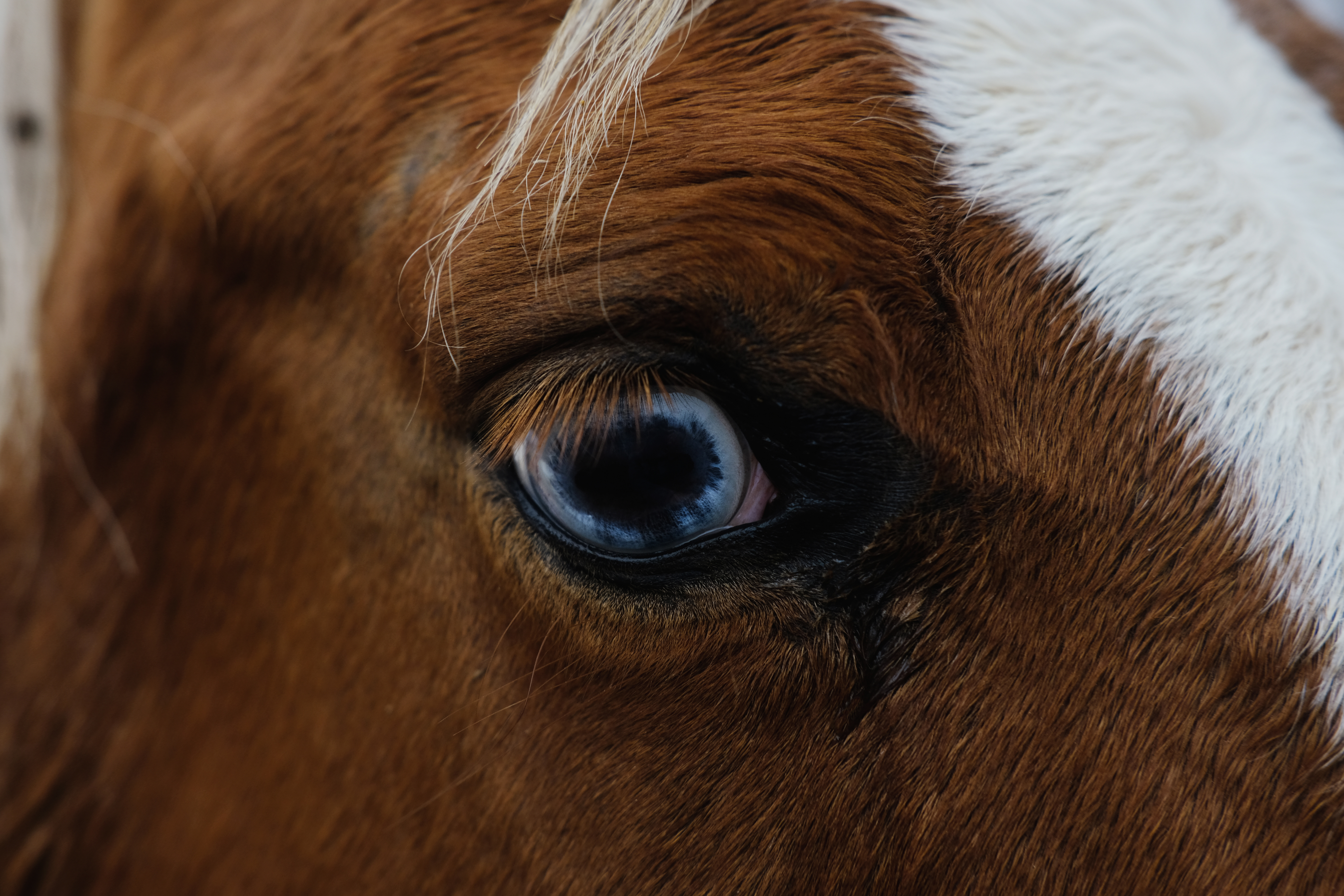Home > Horse Care > Easy equine vision tests
Easy equine vision tests
- February 17, 2025
- ⎯ Equus
Listen here:
Horses can cope remarkably well with vision loss. Stories of blind horses traveling familiar paths at a full canter aren’t just urban legends. This ability to adapt has a downside, however: It can make it difficult to detect changes in your horse’s vision until they are fairly advanced.

If your horse has uveitis or another condition that may affect his vision, check his eyesight regularly to catch developing problems early. These simple equine vision tests will help you safely assess just how much your horse can see.
• Cover one of your horse’s eyes using a fly mask with a towel placed behind it then toss cotton balls or gauze pads into the field of vision of the other eye. Watch to see whether he follows the objects with his uncovered eye.
• Place a garden hose on the ground and walk your horse over it on a loose lead, then repeat with each eye covered. Most horses can see extremely thin objects and will step over them.
• Walk your horse over dark ground that abruptly changes to a light color, such as where black pavement meets light concrete. Visually impaired horses may be wary of stepping on terrain with sudden color changes.
Click here to learn how to recognize the subtle signs of eye trouble.
• Cover one of your horse’s eyes with a fly mask, and wave your hand six inches from the other. Does he react immediately by blinking and/or flinching? Repeat the test on the other side. Do not get your hand too close to the eye, because air currents created by the movement may cause a false reaction.
If any of the results from your tests leave you concerned about your horse’s vision, call your veterinarian.
Don’t miss out! With the free weekly EQUUS newsletter, you’ll get the latest horse health information delivered right to your in basket! If you’re not already receiving the EQUUS newsletter, click here to sign up. It’s *free*!





